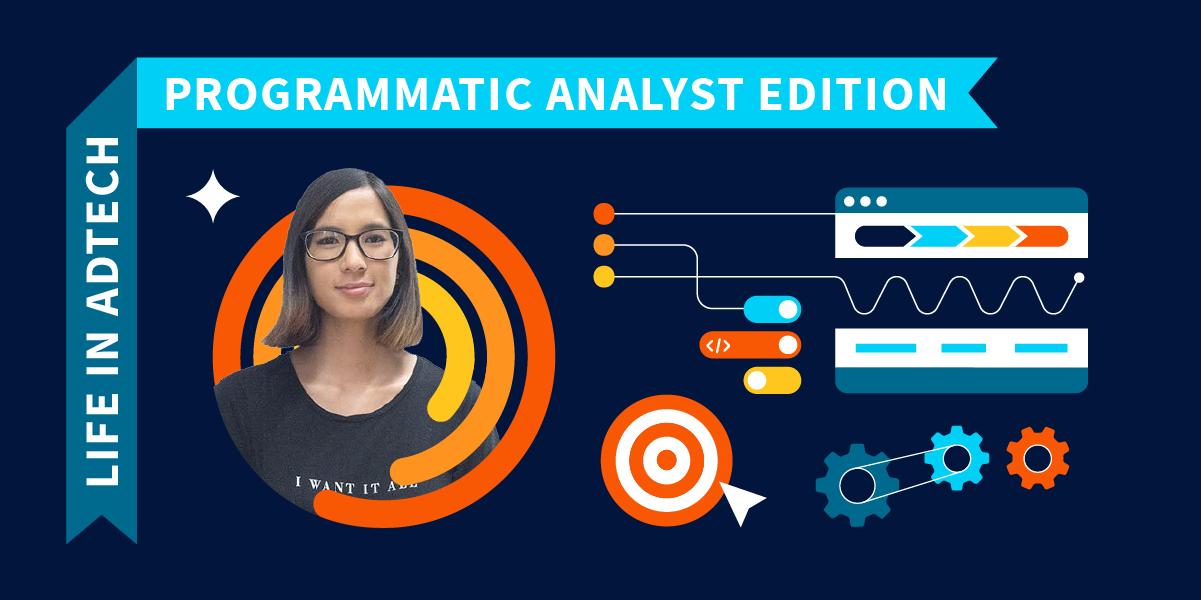In our blog series “Life in Adtech” we’re showcasing the different ways in which StackAdapters are driving innovation in adtech, and creating a progressive tech culture. From using modeling and data to create advanced algorithms to building stylish and robust user interfaces, everyone at StackAdapt is contributing to evolving the StackAdapt platform and providing the best product and service to our clients.
This month features Sasha Yee Fong, a Programmatic Analyst (PA) at StackAdapt. In this post, we will get an inside look at her journey into adtech, what trends she’s seeing in the industry, and her advice for running successful programmatic campaigns.
How did your journey in adtech begin?
In university I was always interested in the study of human behaviour. I was attracted to advertising because I wanted to understand consumer wants and needs by utilizing data. I started my journey in adtech right after graduating university, working as a direct digital media coordinator at an advertising agency. I fostered direct relationships with a variety of publishers and was involved in the campaign process from start to finish. Although I enjoyed the strategy side of things, I wanted to be more involved in big data. That’s how programmatic advertising caught my attention.
A year later, I started as a Programmatic Strategist at StackAdapt. In this role, I managed various campaigns (300+ campaigns in a week!) while providing optimization suggestions to improve overall performance in real-time. Although I enjoyed this, I wanted to dive even deeper into the data so that I could better understand our target audience respective to clients’ needs. So, I joined StackAdapt’s analytics team. Now, I am able to provide additional insights to clients so that they can make more informed decisions about their campaigns.
What is the main focus of your role as a Programmatic Analyst?
My goal as a Programmatic Analyst is to act as a bridge between sales and engineering. Our team provides the flexibility of pulling data from the backend so that our clients can have more insight when improving current and future campaigns. While we can determine overall campaign performance, we can also look at how effective StackAdapt ads were in driving conversions for a brand.
We work to determine the impact of our client’s cross-channel strategies by identifying analytics and providing suggestions for optimizations. For example, we might look at how many ads a user is served before they click or convert. By examining this data, we can tell our clients what the sweet spot for ad frequency is. They can then apply frequency caps accordingly to ensure their ads are reaching a quality audience, and their ad dollars are spent efficiently and effectively.
What trends in programmatic do you think we’ll see take off this year?
I’m expecting that we will see a rise in connected TV (CTV) and programmatic audio advertising this year. These channels saw a rise in popularity during pandemic restrictions, which means enjoying CTV and audio content is now an established habit for much of the population. Even as restrictions begin to loosen, these habits will stick around.
We’ve also seen a rise in screen time in general. It’s likely that this is due to pandemic restrictions paired with the growth of streaming services and content offerings. The rise of screen time was accompanied also by a rise of screen-less media. People discovered alternative ways of keeping themselves entertained and occupied. Some adopted pets while others listened to music or podcasts during their walks.
More time spent on media, whether screened or screen-less, means more opportunities for advertisers to promote awareness of their brands. It’s a great time for programmatic!
What is one piece of advice that you would give a marketer looking to run their first programmatic campaign?
Work with your Account Manager! While all members of the team know the platform, Account Managers are very close to the campaigns themselves. They can fill in gaps in campaign strategy and brand nuances if they exist.
Another piece of advice from an analyst’s perspective would be to run A/B tests. This will help you gain a better understanding of how campaigns should be set up. For example, you’ll gain more insight as to which creative messaging works best for your brand or which tactics are most effective.
What is the most rewarding part of being a Programmatic Analyst at StackAdapt?
The most rewarding part of working at StackAdapt is what comes with working in a fast growing company. I am working in an environment that not only encourages but prioritizes constant learning. As a programmatic analyst, I’m able to deep dive into big data and understand what the main drivers are for optimal campaign performance. I can maximize the usage of my technical skills by pulling raw data from R or SQL, gain insight and then visualize the data being interpreted.
I feel there’s always something new for me to learn as our platform evolves. I have the opportunity to interact with talented individuals across different departments and keep up with the latest advertising trends. I’m grateful to be part of StackAdapt’s rapidly growing success and I’m looking forward to seeing what the future holds.
Interested in joining StackAdapt? See our open roles and apply, here.
In each new addition, we will be highlighting our teams and team members in our “Life In Adtech” series—stay tuned for more!





